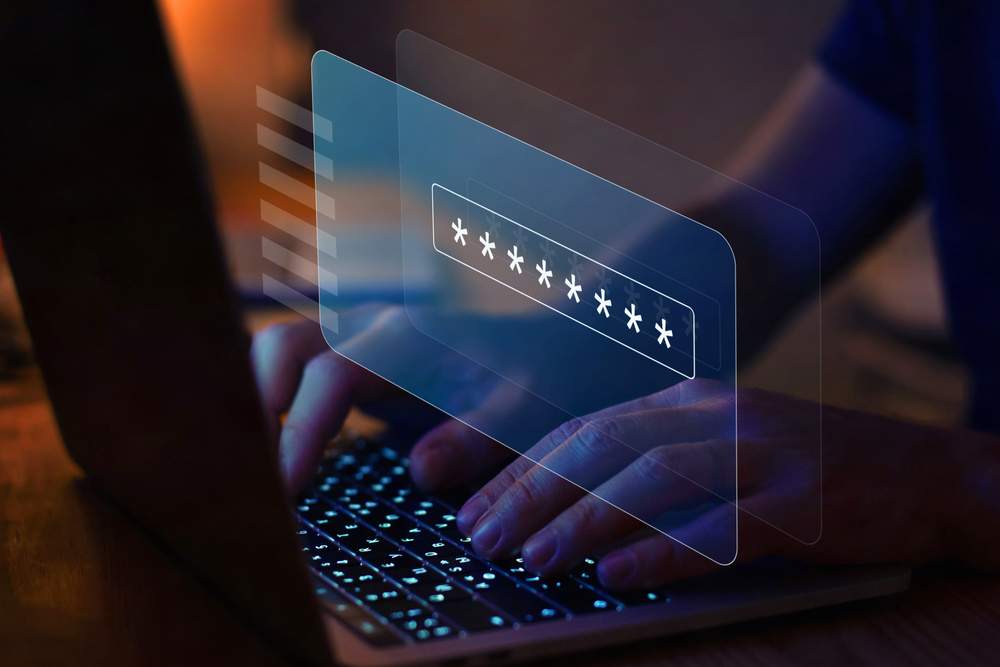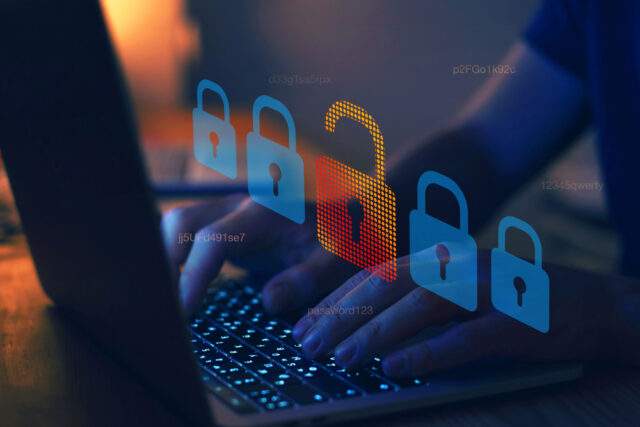How to create a strong password and essential best practices
Read our complete guide on how to create a strong password & some essential best practices to level up your cybersecurity.
Read our complete guide on how to create a strong password & some essential best practices to level up your cybersecurity.

The time it takes you to read this entire blog is all the window a hacker needs to crack a poorly constructed password. Your password is your first line of defense, so make it count. It may be easier to remember the name of your first pet or your mother’s maiden name, but these personal details are also easier for hackers to figure out.
Crafting a robust password demands a strategic approach – one that combines complexity, uniqueness, and unpredictability. So, how can you create a strong password?
In this blog, we’ll explore:
If you want to enhance your cybersecurity stance, you’ll need to create a strong password. A strong password is a combination of characters that is difficult for others to guess or decipher. It typically includes a mix of upper- and lower-case letters, numbers, and special symbols.
The longer and more complex the password, the stronger it becomes, making it significantly more challenging for attackers to break through. A strong password serves as a robust barrier against unauthorized access, ensuring the security of your online accounts and sensitive information.
You need to create a strong password to protect your accounts and sensitive information from unauthorized access and cyber attacks. Weak passwords are vulnerable to various hacking techniques, such as brute force attacks and dictionary attacks, where attackers systematically try different combinations to guess your password.
A strong password significantly reduces the risk of these attacks succeeding, ensuring the security and privacy of your digital assets, personal data, and online presence.
A strong password typically consists of various elements, including uppercase and lowercase letters, numbers, and special characters. It is also characterized by its length and randomness.
To create a strong password, follow these guidelines:
If you have a weak password, you are more susceptible to various cybersecurity risks and potential threats:
Avoid sharing your passwords with anyone, even trusted individuals. Sending passwords via email, messaging apps, or other insecure methods can expose them to potential attackers.
Create distinct passwords for each online account to prevent a breach of one account from compromising others. This minimizes the impact of a security breach.
Use password managers to simplify the process of generating, storing, and auto filling passwords, enhancing security and convenience. 1Password’s combination of features, security, and user-friendly interface makes it a popular password manager among individuals and businesses.
Instead of directly revealing your password hints, use cryptic or personal clues that only you can decipher. This adds an extra layer of protection to your accounts. For example, your password hint could be “street where we met” – this gives minimal clues about what experience you’re referring to.
Enable MFA whenever possible to add an additional layer of security. MFA requires a second form of verification, such as a code sent to your phone, making it harder for unauthorized users to access your accounts.
Password generators create strong and random passwords that are difficult to guess. Autofill features in browsers or password managers can help you enter passwords without the risk of keyloggers capturing them.
Creating a strong password requires a mix of creativity and complexity. Here are several methods to help you craft a robust password and examples that you can draw inspiration from.
Passphrases are longer, sentence-like combinations of words, numbers, and symbols that create a strong and memorable password. For example:
Acronyms involve using the first letter of each word in a phrase to create a password. For example:
Random combinations include mixing letters, numbers, and symbols in a non-predictable sequence to enhance password security. For example:
Book quotes use memorable lines from literature to create unique and meaningful passwords. For example:
Interests-based passwords incorporate personal hobbies, activities, or passions into a password. For example:
We’ve explored how to create a strong password in detail, but what are some practices you should avoid? Here are some mistakes to avoid when it comes to weak passwords:
Creating a strong password is crucial for online security, but bad actors attempt to exploit weak password practices through phishing attempts. Attackers craft convincing messages that mimic trusted entities, exploiting users’ trust to trick them into revealing passwords.
By staying vigilant and recognizing these tactics, individuals can better protect themselves from falling prey to such scams and compromising their strong password practices. Here are some red flags to watch out for:
If someone knows and uses your password,you must take immediate action to secure your accounts and prevent unauthorized access. Here’s what you should do:
Immediately change the compromised password with a strong and unique one that you haven’t used before. This prevents further unauthorized access to your account.
Activate multi-factor authentication on your accounts whenever possible. MFA adds an extra layer of security by requiring an additional verification step along with your password.
Thoroughly review the account activity history to identify any unauthorized actions. If you notice suspicious activities, report them to the service provider and take appropriate measures.
Perform a comprehensive malware scan on your device to ensure it’s not compromised. Malware could have led to the exposure of your password.
Ensure your operating system and security software are up to date. Regular updates help protect against vulnerabilities and potential breaches.
If you’ve reused the compromised password on other accounts, change those passwords as well to prevent a domino effect.
Continuously monitor your accounts for any unusual activities even after taking initial action. Vigilance can help catch any lingering unauthorized access.
If the compromised account is associated with an online service, report the unauthorized access to them. They might provide additional guidance or support.
Take the time to educate yourself about common phishing and hacking techniques. This knowledge can help you avoid similar situations in the future.
If the breach is extensive or involves sensitive information, consider consulting cybersecurity professionals or organizations for expert assistance. They can guide you through the necessary steps to ensure your security.
One of the most widely recognized and reliable password managers is 1Password. It’s known for its robust security features, user-friendly interface, and compatibility with various devices and browsers.
Yes, password generators are a secure tool to use. They create highly complex and random passwords that are extremely difficult for both humans and automated systems to guess. By using a password generator, you can significantly enhance your online security.
Yes, it’s highly recommended to use a different password for each account you have. Reusing passwords across multiple accounts increases your vulnerability. If one account is compromised, attackers won’t gain access to your other accounts if each has a unique password.
To remember complex passwords, consider using a password manager. It securely stores your passwords and auto fills them when needed. This way, you only need to remember one master password for the password manager, making it easier to manage multiple complex passwords.
Instead of writing down passwords, it’s safer to use a reputable password manager. Writing passwords on physical paper poses risks of loss, theft, or unauthorized access. A password manager offers a secure and encrypted digital solution.
While changing passwords periodically can add a layer of security, it’s equally important to use strong, unique passwords, and enable multi-factor authentication. Regular changes might be more critical for high-security accounts, but it can also cause password fatigue. Overall, creating a strong password is the most necessary factor.
If you forget a password, most online services provide password reset or recovery options. These usually involve sending a reset link to your email or phone.
Yes, using passphrases is an effective approach. A passphrase is a longer combination of words that is easier to remember and more challenging for attackers to crack. Crafting a memorable passphrase using unrelated words and characters increases security.
Hackers employ various methods to guess or crack passwords. These include brute force attacks (trying all possible combinations), dictionary attacks (using common words), and leveraging leaked password databases.
All in all, creating a strong password is an essential step to safeguarding your online presence and protecting your personal information. Whereas short and simple passwords can take mere seconds to crack, long and complex passwords can take thousands of years to decipher.
Want to ensure that you create a password that will stand the test of time? We suggest you try CovertSwarm’s password strength testing services. If you do have a vulnerability in your security stance, we’ll be sure to find it.
If you’re worried about your staff’s susceptibility to a phishing attack, enquire about our phishing simulation services instead.

What is password cracking and how does it work?
Read our blog to find out what password cracking is, some common tactics that hackers use to do it & how you can avoid it.

Multi-Factor Authentication (MFA): what you need to know
Read our blog to find out what Multi-Factor Authentication (MFA) is, why it’s vital to have it and how AI makes it more secure & efficient.

What are brute force attacks?
Read our blog to find out what brute force attacks are, how they work, why they’re dangerous and how to identify, recover from and prevent them.